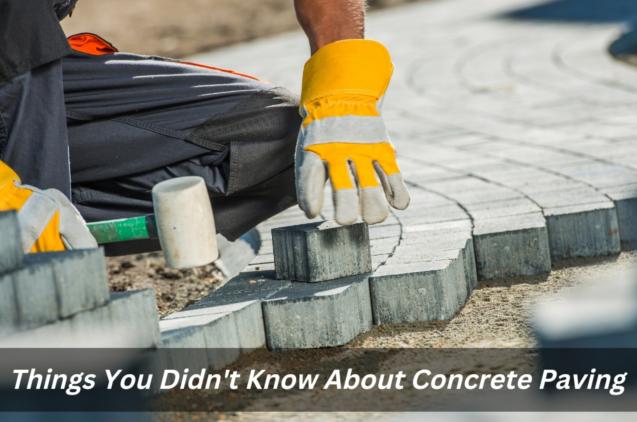
What Is The Advantage of Paving Your Driveway?
It might seem like a little thing, but having a well-paved area or driveway is important. Not only does it look better but also makes driving easier. In some places, if you don’t pave your driveway then you risk damaging the road or even causing accidents.
If you live near a busy street, chances are at least once or twice a year you’re going to need to patch up cracks or replace broken tiles. While paving your driveway is definitely an option, there are other options too, depending on where you live and how much time and effort you want to invest in fixing it.
Paving products include concrete, asphalt, terrazzo, brick and stone for use in building construction. There are various paving patterns and pave options to choose from. These materials must be suitable for their intended uses and may have additional requirements depending on these uses.
Benefits of paving your driveway
- Protects your home against water damage.
- Reduces noise pollution.
- Gives your house a cleaner appearance.
- Protects your property against weeds and roots.
- Prevents erosion.
- Increases curb appeal.
- Helps protect the environment.
- Makes your property more attractive.
- Keeps your driveway clean and tidy.
- Enhances safety.
- Reduces maintenance costs.
- Improves traffic flow.
- Adds value to your property.
There are several types of pavers that you can use in your driveway. If you’re looking for a cheaper alternative, you might opt for brick pavers. However, if you’re interested in creating a unique look for your driveway, then you should consider using stone pavers.
- Brick pavers
- Stone pavers
- Basket weaves
- Concrete pavers
- Exposed Aggregate
This means that when the rain falls directly onto the driveway, it won’t wash away easily. You must be careful while cleaning it so that you don’t get rid of the aggregate part.
This is not recommended for driving over, as it could slip under the wheels. But, it does act as an excellent base for driveway sealer. So, if you plan to lay a sealant on the driveway, then you can pave your driveway with exposed aggregate.
- Contrasting Stretcher Inlay
In the case of contrasting materials, you can choose pavers between ceramic, metal, wood, glass, plastic, etc. And, as far as aesthetics is concerned, it’s one of the best choices.
Plastic has become popular among homeowners these days due to its affordability and ease of installation. It doesn’t require much skill to install. You just need to apply some glue to the joints to connect the pieces together.
When using a third material instead of contrasting materials, it makes sense to use a filler that can increase the overall strength of the structure without adding any extra weight or cost. Fillers such as asphalt, cinder blocks, expanded shale, concrete block, and concrete driveways are typically used for this purpose.
Paver Laying Patterns
There are three common laying patterns for pavers – square, rectangle, and diamond inlay. All of these types of pavers require similar skills. For example, all of them require even pressure during installation. Here are several advantages of choosing one of these layouts:
- Square Pavers
- Rectangle Pavers
- Diamond Pavers
They are mostly made of natural stones. Diamond pavers are less expensive than other designs. Hence, they are widely used in residential homes nowadays.
When choosing any type of pavement, consider what you need for traffic flow and safety. For example, if you need space for cars and a wider pathway with raised kerbing, then you will need to go for a flat surface.



